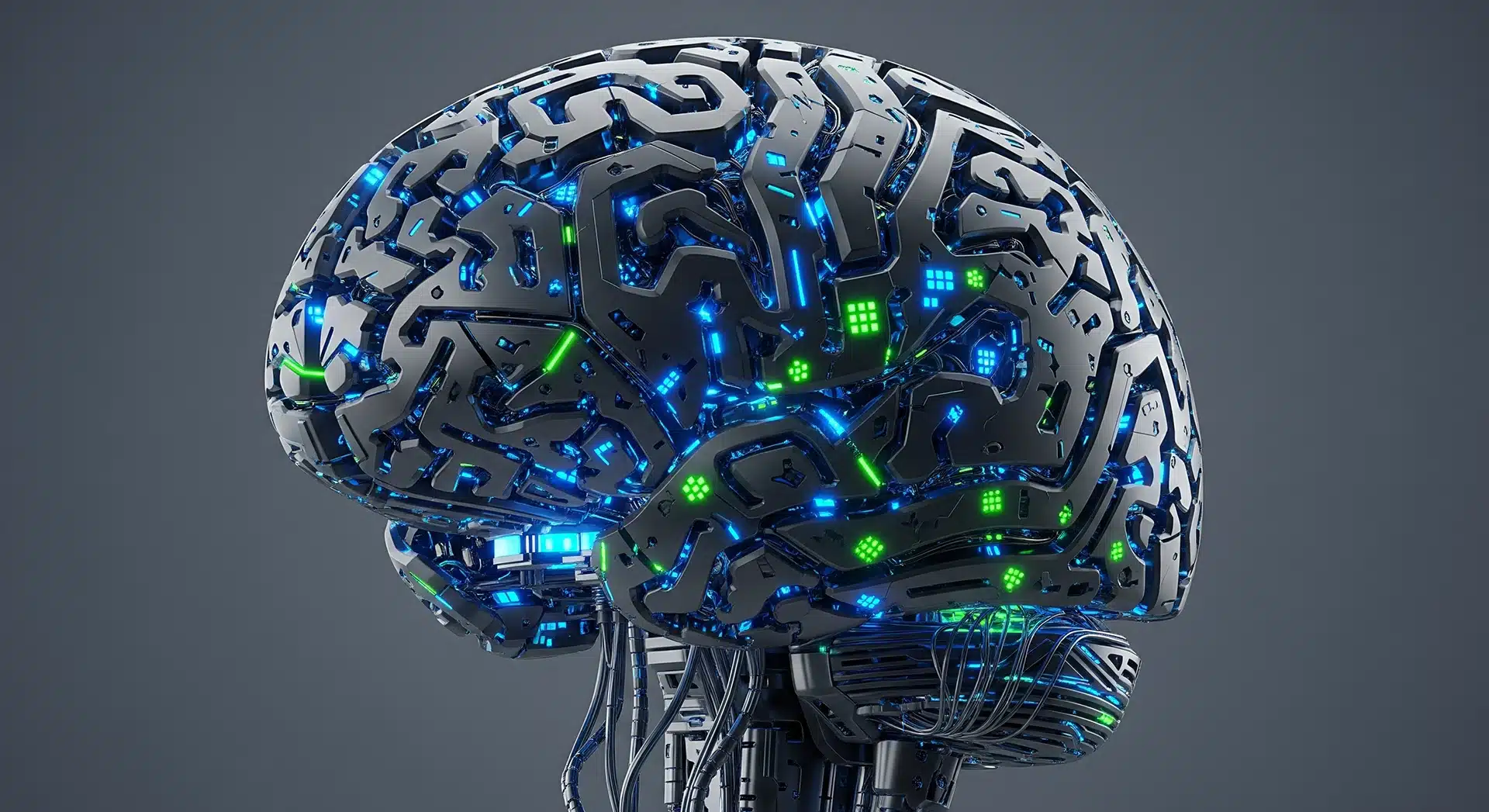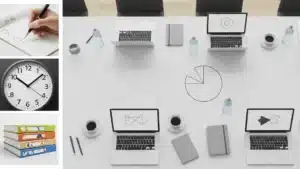
Essential Meeting Agenda Template for High-Performing Teams
Effective meetings are a cornerstone of high-performing teams. They provide a structured environment for collaboration, decision-making, and problem-solving. However, without a well-defined agenda, meetings can easily become unproductive and chaotic. This article will explore the essential elements of a meeting agenda and provide a template that can help teams maximize their time together.
Understanding the Importance of a Meeting Agenda
A meeting agenda serves as a roadmap for discussions, ensuring that all participants are aligned on the objectives. It helps to set expectations and keeps the conversation focused. Without an agenda, meetings can drift off-topic, leading to wasted time and frustration. Furthermore, a well-crafted agenda can also enhance the overall productivity of the meeting, allowing teams to achieve their goals more efficiently and effectively. By providing a clear structure, participants can prepare in advance, leading to more informed discussions and better decision-making.
Benefits of a Well-Structured Agenda
- Clarity: An agenda outlines the purpose and goals of the meeting, providing clarity for all attendees.
- Time Management: It helps allocate time to each topic, ensuring that discussions remain concise and relevant.
- Accountability: Assigning roles and responsibilities within the agenda fosters accountability among team members.
In addition to these benefits, a structured agenda can also facilitate better communication among team members. By clearly defining who will speak on each topic and what points will be addressed, it encourages participants to come prepared with their thoughts and ideas. This preparation not only enhances the quality of the discussion but also empowers individuals to contribute more effectively, leading to a more dynamic and engaging meeting atmosphere.
Common Pitfalls of Meetings Without an Agenda
Meetings that lack a structured agenda often face several challenges. These can include:
- Participants feel unprepared or disengaged.
- Discussions veering off course, leading to unresolved issues.
- Time is being wasted on irrelevant topics, causing frustration among team members.
Moreover, without an agenda, the risk of miscommunication increases significantly. Participants may have different interpretations of the meeting’s purpose, leading to conflicting viewpoints and misunderstandings. This can create an environment of confusion and dissatisfaction, where team members leave the meeting feeling that their time was not valued. Additionally, the absence of a clear agenda can hinder follow-up actions, as decisions made during the meeting may lack the necessary context for implementation, resulting in stalled projects and unmet deadlines.
Key Components of an Effective Meeting Agenda
To create an effective meeting agenda, several key components should be included. Each element plays a vital role in ensuring that the meeting is productive and efficient.
1. Meeting Objective
Clearly define the purpose of the meeting. This could range from brainstorming new ideas to making strategic decisions. A well-articulated objective helps participants understand what is expected and how they can contribute. Additionally, sharing the objective ahead of time allows attendees to come prepared with relevant information or questions, fostering a more engaging and collaborative environment.
2. List of Topics
Outline the specific topics to be discussed. This list should be prioritized based on importance and relevance. By organizing topics in this manner, teams can ensure that the most critical issues are addressed first. Furthermore, including a brief description of each topic can provide context and help participants prepare their thoughts in advance, leading to a more informed discussion.
3. Time Allocation
Assign a time limit to each topic. This encourages focused discussions and helps prevent any single topic from monopolizing the meeting time. It also allows participants to prepare for their contributions within the allocated timeframe. To enhance this structure, consider designating a timekeeper who can gently remind the group when it’s time to move on, ensuring that all agenda items are covered and that the meeting stays on track.
4. Roles and Responsibilities
Clearly outline who will lead each topic or discussion point. Assigning roles not only clarifies responsibilities but also empowers participants by giving them ownership over specific areas of the agenda. This approach can enhance engagement, as individuals are more likely to contribute meaningfully when they know they have a stake in the conversation. Additionally, it can help to identify any subject matter experts in the group who can provide valuable insights during relevant discussions.
5. Follow-Up Actions
Include a section for documenting follow-up actions and decisions made during the meeting. This ensures that all participants leave with a clear understanding of their responsibilities and deadlines. By summarizing key takeaways and assigning tasks, you can create accountability and keep momentum going after the meeting concludes. This practice not only reinforces the importance of the discussions held but also serves as a reference point for future meetings, allowing teams to track progress on ongoing projects or initiatives.
Sample Meeting Agenda Template
Below is a sample agenda template that can be customized for various types of meetings. This template includes all the essential components discussed earlier. Having a clear agenda not only helps in keeping the meeting focused but also ensures that all participants are aware of the topics to be discussed and the time allocated for each item. This structure can significantly enhance productivity and engagement during the meeting.
Additionally, it’s important to circulate the agenda ahead of time to allow participants to prepare adequately. This can lead to more meaningful discussions and better decision-making. Encourage team members to contribute to the agenda by suggesting topics or points they feel should be addressed. This collaborative approach fosters a sense of ownership and accountability among the participants, making the meeting more effective.
Agenda Item | Description | Time Allotted | Owner
|
|---|---|---|---|
1. Welcome and Introductions | Brief opening remarks and introductions of participants. | 5 minutes | Meeting Facilitator |
2. Review of Previous Meeting Minutes | Discuss action items and outcomes from the last meeting. | 10 minutes | Team Member |
3. Main Discussion Topic A | In-depth discussion on Topic A, including key issues and potential solutions. | 20 minutes | Team Lead |
4. Main Discussion Topic B | Exploration of Topic B, focusing on challenges and opportunities. | 20 minutes | Team Member |
5. Action Items and Next Steps | Summarize decisions made and assign action items. | 10 minutes | Meeting Facilitator |
6. Closing Remarks | Final thoughts and next meeting scheduling. | 5 minutes | Meeting Facilitator |
Moreover, consider including a section for feedback at the end of the meeting to continuously improve the agenda and overall meeting structure. This can be a simple survey or a quick round of comments from participants about what worked well and what could be improved. By implementing feedback, you can create a more dynamic and responsive meeting culture that adapts to the needs of the team. This will not only enhance the effectiveness of future meetings but also promote a more collaborative and engaged team environment.
Best Practices for Implementing the Agenda
Creating an agenda is just the first step; implementing it effectively is equally crucial. Here are some best practices to ensure that the agenda is followed and the meeting remains productive.
1. Distribute the Agenda in Advance
Sharing the agenda with participants ahead of time allows them to prepare adequately. This preparation can lead to more meaningful discussions and contributions during the meeting.
2. Stick to the Agenda
During the meeting, it is essential to adhere to the agenda as closely as possible. If discussions begin to stray off-topic, the facilitator should gently steer the conversation back to the agenda items.
3. Encourage Participation
Engagement from all participants is vital for a successful meeting. Encourage team members to share their insights and opinions on each agenda item. This can be achieved by creating a safe environment where everyone feels comfortable contributing.
Adapting the Agenda for Different Types of Meetings
Not all meetings are the same, and therefore, the agenda should be adapted to suit the specific context. Here are a few examples of how to modify the agenda for different types of meetings:
1. Team Check-Ins
The agenda for regular team check-ins can focus on updates, challenges, and the support needed from team members. This type of meeting often benefits from a more informal structure, allowing for open dialogue.
2. Project Kick-Off Meetings
In project kick-off meetings, the agenda should include project goals, timelines, and roles. It is crucial to ensure that all team members understand their responsibilities and the overall vision for the project.
3. Problem-Solving Sessions
For meetings aimed at solving specific problems, the agenda should include a clear definition of the issue, potential solutions, and criteria for evaluating those solutions. This structured approach can lead to more effective outcomes.
Tools for Creating and Managing Meeting Agendas
Several tools are available to help teams create and manage their meeting agendas. These tools can streamline the process and enhance collaboration among team members.

1. Digital Collaboration Platforms
Platforms like Slack, Microsoft Teams, or Asana allow teams to create and share agendas in real-time. These tools also enable participants to add items to the agenda and comment on specific topics.
2. Calendar Applications
Using calendar applications such as Google Calendar or Outlook can help schedule meetings and attach agendas directly to the calendar invite. This ensures that all participants have access to the agenda before the meeting.
3. Document Sharing Services
Services like Google Docs or Dropbox Paper facilitate collaborative agenda creation. Team members can contribute to the agenda, make suggestions, and provide feedback before the meeting.
Measuring the Effectiveness of Meetings
Teams should regularly assess their meeting processes, using feedback and evaluation methods, to continuously improve meeting effectiveness.
1. Post-Meeting Surveys
Conducting surveys after meetings can provide valuable insights into what worked well and what could be improved. Questions can focus on the clarity of the agenda, the relevance of topics discussed, and overall satisfaction with the meeting.
2. Reflective Discussions
Holding reflective discussions with team members can help identify areas for improvement. This can be a part of the next team meeting, where participants can share their thoughts on the previous meeting’s effectiveness.
3. Tracking Action Items
Monitoring the completion of action items assigned during meetings can also serve as a measure of effectiveness. If action items are consistently unaddressed, it may indicate a need for changes in how meetings are conducted.
Make Every Minute Count
A clear, intentional agenda transforms meetings from time-fillers into momentum-builders. With defined goals, smart time allocation, and shared ownership, teams stay focused and outcomes stay on track. PresEngage helps streamline the process, making it easy to plan, engage, and evolve your meeting culture. Start for free with a 14-day trial and lead with purpose.
Present Smarter. Engage Answer Convert Close Remarkably.
Dazzle your audience with Real-Time Q&A powered by your AI Co-Presenter.(Patent Pending)
PresEngage™ makes you look brilliant by connecting with everyone, instantly.
No Credit Card Required. 100% Risk Free.
Frictionless Audience Experience GUARANTEED.






